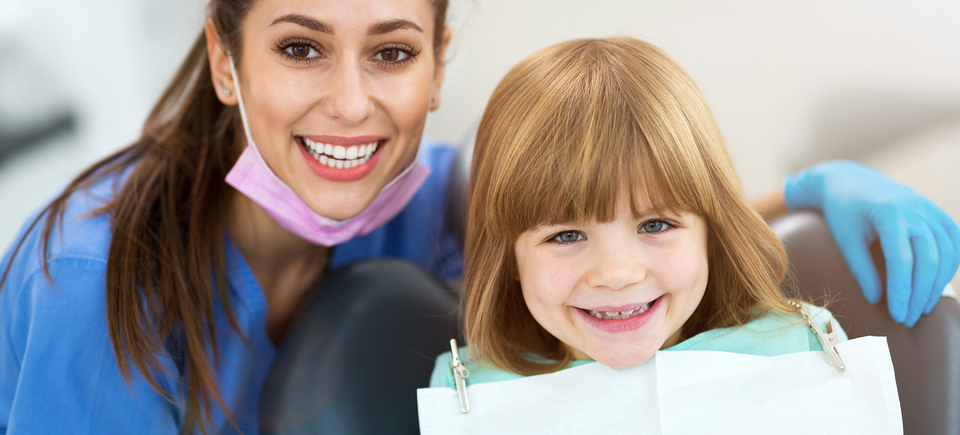A children’s baby teeth (properly known as “primary teeth”) are as important as their permanent adult teeth.
Primary teeth typically begin to appear when a baby is between 6 months and 1 year of age. Most children have a full set of 20 primary teeth by the time they are 3 years old.
Primary teeth help children chew and speak. They also hold space in the jaws for the permanent teeth that are growing under the gums.
The Australian Dental Association (ADA) recommends that a dentist examines a child within six months of his or her first tooth coming in and no later than his or her first birthday.
A dental visit at that early age is a “well-baby checkup” for the teeth. Besides checking for tooth decay and other problems, our dentist can show you how to clean your child’s teeth properly and how to evaluate any adverse habits such as thumb sucking.
When teeth first come in, some babies have sore or tender gums. Gently rubbing your child’s gums with a clean finger, a small, cool spoon or a wet gauze pad can be soothing. You can also give the baby a clean teething ring to chew on. If your child is still cranky and in pain, consult our dentist or your doctor.

Thumb sucking is a natural reflex for children. It is thought that sucking on thumbs, fingers, pacifiers or other objects makes babies feel secure and happy. It helps them learn about their world. Young children might also suck to soothe themselves and help themselves fall asleep.
However, after the permanent teeth come in, sucking can cause problems with the proper growth of the mouth and alignment of the teeth. It can also cause changes in the roof of the mouth. Pacifiers can affect the teeth essentially the same ways as sucking fingers and thumbs, but the use of a ppacifier is often an easier habit to break.
The intensity of the sucking is a factor that determines whether dental problems might result. If children rest their thumbs passively in their mouths, they are less likely to have difficulty than those who vigorously suck their thumbs. Some aggressive thumb-suckers might develop problems with their baby teeth.
Children usually stop sucking between the ages of two and four years of age, or by the time the permanent front teeth are ready to erupt. If you notice changes in your child’s primary teeth, or are concerned about your child’s thumbsucking consult your dentist.
If these tips don’t work, remind your child of the habit by bandaging the thumb or putting a sock on the hand at night. Our dentist or your pediatrician might prescribe a bitter medication to coat the thumb or the use of a mouth appliance.
Tooth decay in infants and toddlers is sometimes referred to as “baby bottle tooth decay”, as it can occur if a baby is put to bed with a bottle, or if a bottle is used as a pacifier for a fussy baby.
Baby bottle tooth decay most often occurs in the upper front teeth, but other teeth can also be affected.
Even though they are temporary, your child’s baby teeth are important, and they are still susceptible to cavities. Children need strong, healthy teeth to chew their food, speak and have a good-looking smile. Their first teeth also help make sure their adult teeth come in correctly. It’s important to start infants off with good oral care to help protect their teeth for decades to come.
Many factors can cause tooth decay. One common cause is the frequent, prolonged exposure of the baby’s teeth to drinks that contain sugar – such as when the baby is put to bed with a bottle, or when a bottle is used as a pacifier for a fussy baby.
Tooth decay can also begin with cavity-causing bacteria being passed from the mother (or primary caregiver) to the infant in the saliva. When the mother puts the baby’s feeding spoon in her mouth, or cleans a pacifier in her mouth, the bacteria can be passed to her baby.
If your infant or toddler does not receive an adequate amount of fluoride, they can also have an increased risk of tooth decay.
The good news is that decay is preventable!
When your child’s first tooth appears, talk to our dentist about scheduling the first dental visit. Treat the first dental visit as you would a well-baby checkup with the child’s doctor.
Remember: starting early is the key to a lifetime of good dental health. For more information about nutrition and your baby, visit the Academy of Nutrition and Dietetics.